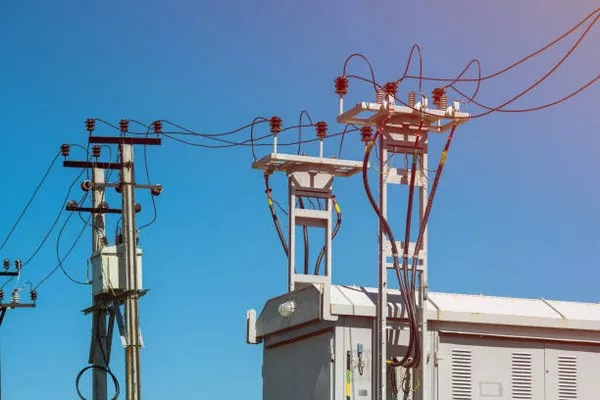Transformers are critical components in electrical power systems, facilitating the transmission and distribution of electricity across vast distances. Ensuring their reliability and efficiency is paramount, and this is achieved through various testing methods. This article explores the different types of transformer testing, their significance, procedures, and the technologies involved.
Importance of Transformer Testing
Transformers are subjected to various stresses throughout their operational life, including electrical, thermal, and mechanical stresses. Over time, these stresses can lead to insulation breakdown, short circuits, and other failures that can result in significant financial loss and safety hazards. Therefore, regular testing is essential to:
Ensure Safety: Prevent accidents caused by transformer failures.
Enhance Reliability: Maintain operational efficiency and reduce downtime.
Assess Performance: Determine the operational condition of transformers.
Extend Lifespan: Identify and mitigate potential issues before they lead to catastrophic failures.
Types of Transformer Testing
Transformer testing can be classified into several categories, each serving different purposes throughout the transformer’s lifecycle.
1. Factory Tests
These tests are conducted at the manufacturing facility before the transformer is delivered to the customer. They typically include:
Power Frequency Voltage Test: Tests the insulation strength under normal operating conditions.
Induced Voltage Test: Assesses insulation integrity under increased voltage conditions.
Ratio Test: Verifies the transformer’s turns ratio, ensuring the correct voltage transformation.
Short-Circuit Impedance Test: Measures the impedance and can help in evaluating losses.
Factory tests help ensure that the transformer meets specified design and performance criteria before installation.
2. Field Tests
Field tests are performed after installation and periodically throughout the transformer’s operational life. Key field tests include:
Insulation Resistance Test: Measures the resistance of the insulation, indicating its condition and potential for breakdown.
Power Factor Testing: Evaluates the power factor of the insulation system, which can indicate deterioration.
Transformer Sweep Frequency Response Analysis (SFRA): Detects mechanical changes in the transformer structure due to external forces, such as earthquakes or transport.
Field tests are crucial for assessing the operational health of transformers and can help identify early signs of degradation.
3. Diagnostic Tests
In addition to standard testing, diagnostic tests provide deeper insights into transformer health:
Dissolved Gas Analysis (DGA): Analyzes gases dissolved in transformer oil to detect abnormal conditions. Certain gases indicate specific types of insulation failure or overheating.
Furan Analysis: Measures the concentration of furan derivatives in the insulation paper, indicating its degradation level.
These tests are valuable for predictive maintenance, enabling operators to take corrective action before failure occurs.
4. Routine Maintenance Tests
Routine tests are typically performed on a schedule to ensure ongoing reliability. Common tests include:
Thermal Imaging: Identifies hotspots that indicate potential issues within the transformer or its connections.
Vibration Analysis: Monitors mechanical health and identifies misalignments or imbalances.
Regular maintenance testing helps ensure that transformers operate efficiently and safely.
Testing Procedures
Transformer testing procedures must adhere to industry standards, such as those set by the Institute of Electrical and Electronics Engineers (IEEE) and the International Electrotechnical Commission (IEC). Testing typically involves:
Preparation: Ensuring the transformer is de-energized, isolated, and properly grounded.
Instrumentation: Utilizing calibrated instruments to ensure accurate measurements.
Execution: Conducting tests according to established protocols, often requiring specialized equipment.
Analysis: Interpreting test results against industry standards or manufacturer specifications.
Reporting: Documenting findings and recommendations for further action, if necessary.
Technological Advances in Transformer Testing
Recent advancements in technology have enhanced transformer testing methods, improving accuracy and efficiency:
Smart Sensors: These sensors can monitor transformers in real time, providing continuous data on various parameters such as temperature, humidity, and gas concentrations.
Artificial Intelligence (AI): AI algorithms can analyze vast amounts of data collected from transformers, identifying patterns and predicting potential failures.
Remote Monitoring: Many modern transformers come equipped with remote monitoring capabilities, allowing operators to track performance and health indicators without needing physical inspections.
See Also WHAT DOES A STEP DOWN TRANSFORMER DO TO CURRENT
Conclusion
Testing transformers is a critical aspect of ensuring their reliability and efficiency within the electrical power system. By conducting factory, field, diagnostic, and routine maintenance tests, operators can identify potential issues early and mitigate risks associated with transformer failures. As technology continues to advance, the methods of testing will evolve, incorporating smart sensors and AI to enhance predictive maintenance capabilities. Ultimately, the proactive testing and monitoring of transformers will lead to increased safety, reduced downtime, and extended lifespan, benefiting both utility operators and consumers alike.

